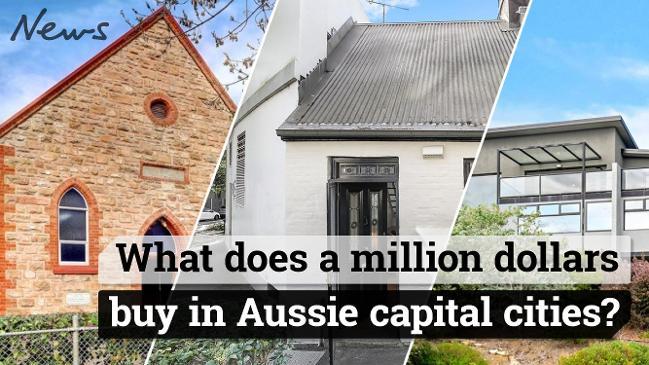This graph is the clue to future house prices
THIS weekend we get a big clue about what will happen to Australia’s housing market..

OMINOUS signs are developing and only a big result this weekend will be enough to dispel them.
November is the busiest time of the year for auctions, but this year is curious. Not many houses are changing hands. In fact, the number of houses being traded in Australia’s big cities is falling.
As you can see in the next graph, the number of homes being traded in Sydney, Melbourne and Brisbane is falling sharply — meanwhile Hobart is surging.
Buyers and sellers can’t come to an agreement and houses just aren’t being traded. Supply is getting pent up and demand is too. The question is who will blink first? Will vendors release a flood of property on to the market and accept lower prices? Or will buyers hit up their bank managers for ever-larger loans and continue buying up?
DID EVERYONE WHO WANTS A HOUSE ALREADY BUY ONE?
The share of Aussies who rent a home has risen from 27 per cent in 1991 to 31 per cent now. That could well suggest plenty of pent-up demand for the great Australian dream.
Can home vendors relax in the knowledge there are a lot of potential buyers out there? The obvious impediment is an average price level out of reach of many people on one income, and vast swathes of our big cities that are out of reach of home-buying households with two incomes.
Australian house prices have hit record levels as Aussies take on record volumes of debt to buy up. Nowhere is that trend more apparent than Sydney, where the average price of a house is now more than $1 million.
Sellers will obviously hold off from selling if they think prices will be higher later.
Near my place in Melbourne, someone held two auctions without getting enough bids, before finally selling their two bedroom apartment for $915,000 (The link says there were two auctions in total, but they’re not counting one where nobody showed up except me — just sticky-beaking — so the crestfallen real estate agents were forced to cancel).
In this case, the owners held out long enough for prices to bounce back. But that only works if other vendors are holding back their property too. If other vendors give up and start selling at lower than expected prices, holding on to a property won’t help. When house prices fall, over time vendors have no choice but to accept the new normal.
(Apartment owners can’t do this, but house owners have a good back-up option in lieu of selling. Instead of moving somewhere bigger, a lot of people are renovating. Renos are in a little renaissance in Australia at the moment. If buying a bigger place is going to cost $200,000 more than your current house, it probably makes sense to spend $60,000 putting on an extra bedroom.)
Cameron Kusher of real estate data firm CoreLogic says not much has been on sale in recent times.
“Demand has been strong but there has been relatively little for sale, this has increased competition for available stock and driven up dwelling values,” he said.
The data doesn’t include sales off the plan until the property trade is actually settled, so where sales off the plan have increased, that might explain some of the apparent shortfall, Mr Kusher said.
THE LESSONS OF HISTORY
On pure logic, it’s hard to say if buyers or sellers will blink first as sales volumes fall. History, however, suggests home vendors will bear the pain.
On the sales graph earlier you could see a sharp dip in volumes in 2008 and a longer one in 2011/12. When we cross reference that with house price data in the next graph, we can see that those times were when Australian house price growth went backward.
That hints that price growth goes backward when sales volumes bottom out. The logic could run in the other direction, but if you want further hints that buyers might be about to win, look no further than the Sydney auction clearance rate.
It fell to 64 per cent, way down from more than 80 per cent a year ago. Buyers just aren’t offering what sellers want, and the quickest way to solve that is for prices to fall.
As for whether that will happen or not? This weekend’s sales results will be another big clue.




